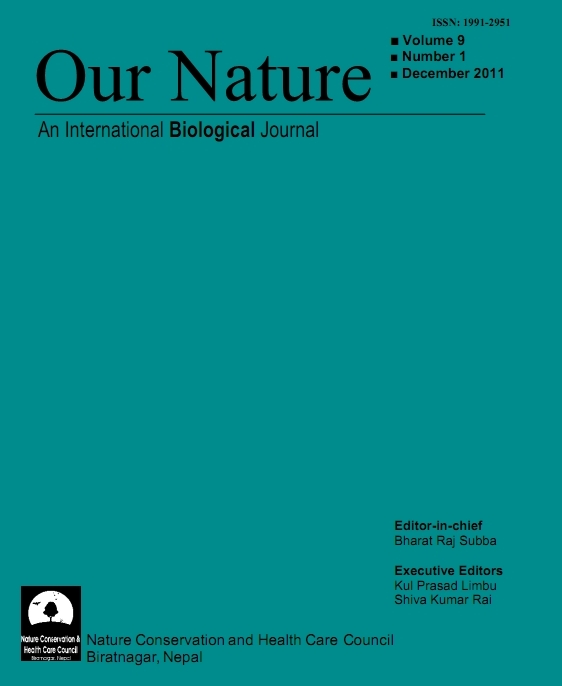Effects of Organic and Inorganic Fertilizers on the Growth Performance of Carps in Earthen Ponds through Polyculture System
DOI:
https://doi.org/10.3126/on.v9i1.5727Keywords:
Carp polyculture, earthen pond, organic and inorganic fertilizerAbstract
Aquaculture is the fastest-growing food-producing sector in the World and has exhibited continuous improving in total production throughout the recent decades. A carp polyculture experiment was carried out to evaluate the growth performance of major carps in semi-intensive fish culture system. Two earthen ponds located at Kadirganj of Boalia thana under Rajshahi district of Bangladesh were selected to study the effect of fertilizer (organic as cowdung and in-organic as triple super phosphate) in supplemented ponds on the growth of carps. Pond -01 was fertilized with cowdung and TSP at the rate of 1728 and 20 kg/h respectively, at 10-day intervals. Pond -02 was without fertilizer. Each pond was stocked with 30% Labeo rohita, 20% Catla catla, 15% Cirrhinus mrigala, 15% Hypophthalmichthys molitrix, and 20% Cyprinus carpio with a total stocking density of 10000/ha. Both ponds were supplemented with mustard oil cake, rice bran and maize bran at the rate of 2.5 kg/ha for each, given for a period of six months as daily basis. The net fish production was found to be 2605 and 1795 kg/ha/year in pond -01 and pond -02, respectively. The results showed that fish production was significantly higher in pond -01 than pond -02 (P<0.05). Pond -01 showed 1.45 times greater fish production than that of pond -02. The results of this study provided invaluable information for the sustainable aquaculture, as well as providing an important baseline for future studies within Bangladesh and surrounding developing countries.
Downloads
Downloads
How to Cite
Issue
Section
License
This license enables reusers to distribute, remix, adapt, and build upon the material in any medium or format for noncommercial purposes only, and only so long as attribution is given to the creator.




